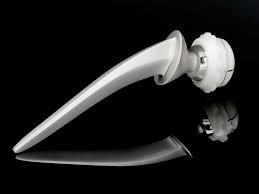Medical procedures and technologies have undergone so many advances in the past half of a century that it is nearly impossible to keep up. One really amazing technology that became widely available during the 1970's is the artificial joint. Large joints like the hip and the knee became available first. At this time, it is possible to replace many other of the body's numerous smaller and more complex joints. While total hip replacement Baltimore MD is a frequent choice for people who are suffering from pain and disability due to an injury or a degenerative bone disease, and it most often occurs without incident, it does carry some risks.
Hip Replacement Baltimore Risks
- Not all orthopedic surgeons are created equal. Risks of hip replacement surgery Baltimore MD can be minimized by investigating a wide range of different doctors before choosing one. It may be somewhat inconvenient to travel a distance away from home to have surgery, yet having a good outcome for something as important as a major joint replacement surgery is certainly worth the extra effort.
- Some hip surgeries have outcomes that are not 100% clinical failures, yet they are also not completely successful. A surgery that is effective at relieving some pain and disability may also result in some other unwanted effects. Nerve damage is a possibility. So is ending up with one leg that is shorter than the other, a permanent limp, or future difficulties with spinal alignment. A very small number of patients end up with a completely or partially paralyzed hip.
- There are risks anytime a general anesthesia is administered for any surgical procedure. The drugs needed to produce complete unconsciousness and insensibility during the procedure are very strong and can have unintended consequences on the body. This is especially true of older individuals who may have co-existing health conditions like high blood pressure and heart disease. Some of this risk can be mitigated by having a spinal block that does not produce unconsciousness, but stops all feeling below the waist. Obviously, though, not everyone wants to be awake for their hip replacement surgery, even if they cannot feel anything.









